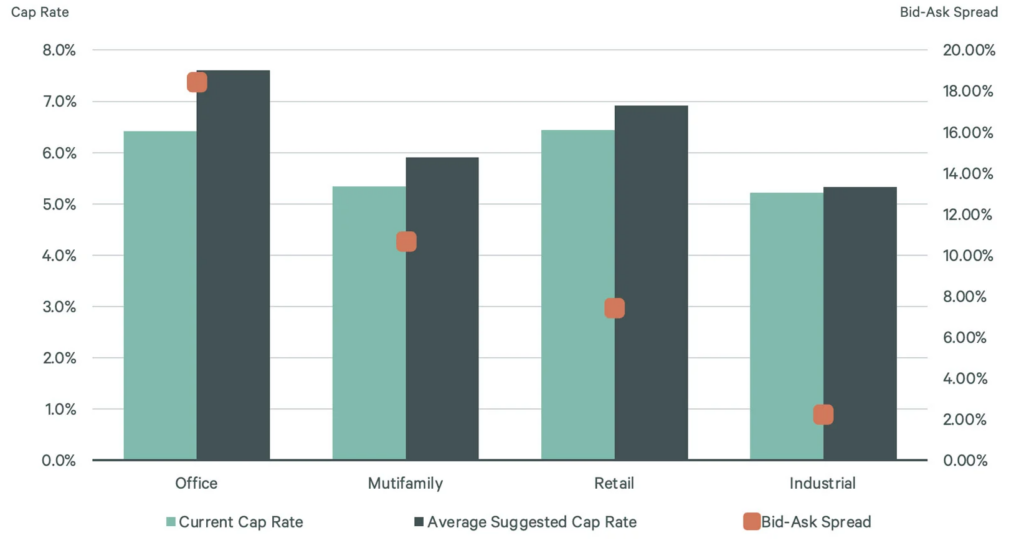Why Cap Rates Matter in Multifamily Investing
If you’re looking to grow wealth through real estate, especially multifamily, you’ve probably heard the term “cap rate” thrown around. But what is a good cap rate for multifamily?
And, what does it really mean?
More importantly: how do you know when something is worth pursuing?
Whether you’re eyeing your first apartment complex or expanding your real estate investing portfolio, understanding cap rates is key to making smart decisions.
Let’s break it down.
What Is a Cap Rate?
The cap rate, or capitalization rate, is a formula investors use to estimate a property’s potential return.
The calculation is simple:
Cap Rate = Net Operating Income (NOI) ÷ Purchase Price
So if a property nets $100,000 a year and costs $1 million, its cap rate is 10%.
Cap rates help investors compare properties across markets and asset classes. But they also reflect risk. Higher cap rates usually mean more risk—or untapped potential.
If you want some help calculating, check out our free instant commercial real estate cap rate calculator.

The Role of Cap Rate for Multifamily Investing
When it comes to multifamily cap rates, they give you a fast way to assess whether a deal is worth deeper due diligence.
Cap rate for multifamily properties tend to be lower than other asset classes because of stability and demand.
And here’s the truth: understanding apartment cap rates alone won’t make you a successful investor. But not understanding them can absolutely lead you to overpay.
Consider brushing up on how to evaluate expenses before running numbers on any deal.
Key Factors That Affect Multifamily Cap Rates
Several factors play into how cap rates are determined, and they vary by property and market:
1. Location and Market Conditions
Cap rates in high-demand cities like Austin or Miami tend to be lower due to appreciation potential and competition. Rural or declining markets often carry higher cap rates to reflect higher risk.
2. Property Class (A, B, C)
Class A assets (newer, high-end) typically have lower cap rates than Class B or C. Investors accept lower returns in exchange for lower risk and fewer renovations.
3. Economic Conditions
Rising interest rates, inflation, and economic uncertainty can all impact buyer expectations—and thus cap rates. Keep an eye on trends from sources like the Federal Reserve or BLS.
4. Current vs. Historical Multifamily Cap Rates
It’s important to look at trends over time. Historical multifamily cap rates show how much market conditions impact returns.
For example, according to recent data, current cap rates for multifamily in strong urban markets hover around 4.5%–6.5%. In tertiary markets, they may range from 7%–8.5%.
Average Cap Rates: What Banks Are Lending On
This is a common question:
What’s the average cap rate banks will lend for multifamily?
Banks tend to underwrite conservatively, often expecting 1.25x debt service coverage at a 6%–7% cap rate depending on market and deal profile.
If you’re relying on bank financing, especially with today’s tighter lending standards, your projected cap rate needs to support the debt, plain and simple.
Cap Rates by Market and Asset Type

Let’s get more specific.
Class A Properties in Primary Markets:
Cap rates typically sit between 4%–5%.
Class B/C in Secondary or Tertiary Markets:
You might see cap rates between 6%–9%, but they come with more operational risk.
Investors must also consider income demographics, job growth, and housing demand—all key drivers behind cap rate shifts.
Check out this post on evaluating value-add opportunities if you’re targeting underperforming properties with higher cap rates.
How to Determine a Cap Rate on a Deal
Cap rate isn’t one-size-fits-all.
To accurately estimate the apartment building cap rate, you need:
- Reliable, trailing 12-month NOI
- Realistic expense projections
- A firm grasp of the current market
Don’t just rely on broker pro formas. Vet the income and get your hands on real expense reports.
You can use this free cap rate calculator to quickly run numbers based on your deal assumptions. (← Insert calculator link here)
Cap Rate Trends and What They Mean for You
In recent years, we’ve seen cap rate compression in major markets due to competition and low interest rates.
But that’s starting to shift.
As rates rise, buyers are demanding higher returns, which means multifamily cap rates are beginning to inch up. That opens doors for investors who stay educated and act fast.
If you’re raising capital, this free course on finding deals in 2025 can give you a major edge in today’s competitive market.
What is a Good Cap Rate for Multifamily?
A good cap rate for multifamily properties typically falls between 4% and 10%, depending on the market, asset class, and risk profile.
In strong, low-risk markets like major metros, a lower cap rate (around 4%–5%) is common, while in emerging or higher-risk markets, investors may look for 6%–8% or higher.
Ultimately, a “good” cap rate balances cash flow and risk, and should align with your investment goals, financing terms, and long-term strategy.
Final Thoughts from Rod Khleif
At the end of the day, cap rates are a tool—not a finish line.
They help you assess potential and compare apples to apples, but they’re just one part of the equation. You also have to factor in your business plan, financing structure, exit strategy, and your own risk tolerance.
A “good” cap rate is one that supports your goals and allows you to sleep at night.
If you’re brand new, aim to build relationships with brokers and lenders who can help you understand where the market is heading.
And most importantly: don’t get caught up chasing returns without understanding the risks. Multifamily investing is a marathon, not a sprint. This is a long term strategy to build massive cash flow.

